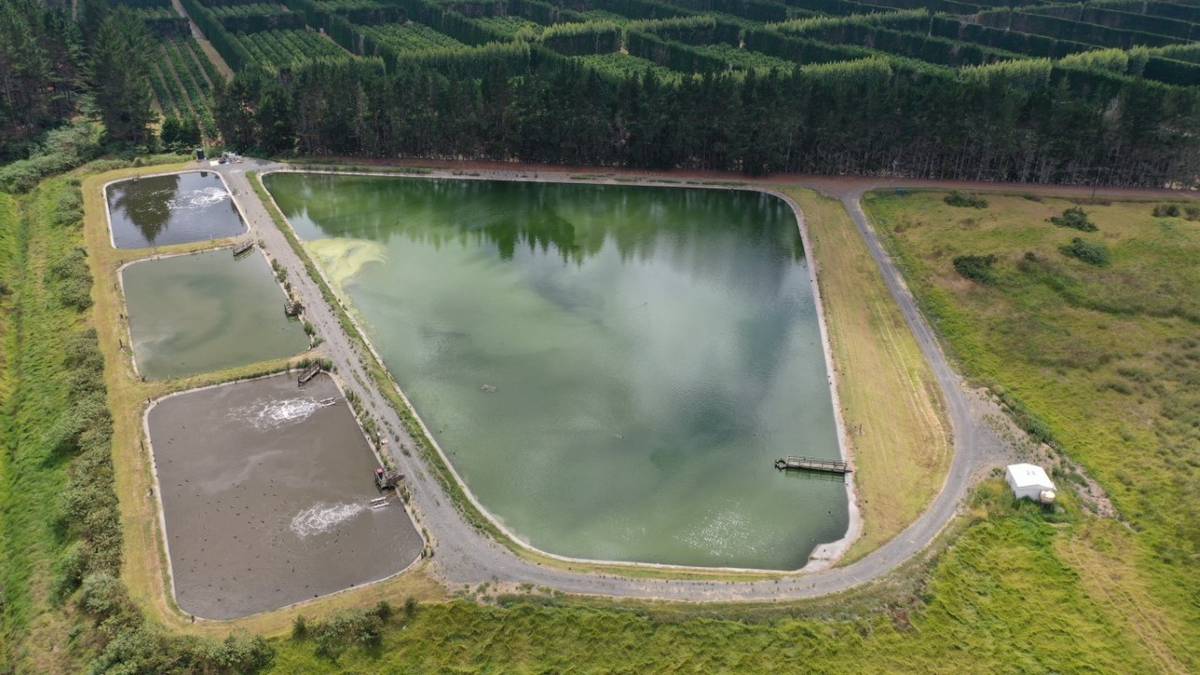The Taipā Wastewater Treatment Plant serves Taipā (pictured), Mangōnui, Coopers Beach and Cable Bay. Photo / Petrina Hodgson
The trial of new breakthrough technology will prove whether the Far North holds the key to the future of the country’s wastewater industry.
Far North District Council has confirmed the Taipā Wastewater Treatment Plant (TWTP) Transformation Project is set to launch a 12-month trial of a small electrocoagulation (EC) technology unit at the Taipā sewage facility.
The project working group (Ngāti Kahu hapū Matakairiri, Ngati Tara and Ngati Whata, Clean Waters to the Sea Tokarau Moana Charitable Trust/community representative Andreas Kurmann and Far North District Council) is the first co-design model of its kind and has been working for more than a year to find the best possible option for the failing plant.
Following a series of workshops with engineering consultancy Beca Limited, the group found a slow-rate irrigation (soil moisture deficit) land discharge scheme, plus EC technology was the solution.
Advertisement
Clean Waters to the Sea spokesman and biochemist Kurmann said the group’s decision to choose EC technology was a first for Aotearoa, despite its widespread use overseas.
“This technology is a cheaper, better option for the environment and has the potential to transform the country’s wastewater industry.”
“It will not only clean the wastewater to a quality that can be safely released to land or water (or for reuse) but will be possible to package and sell the nutrients removed as fertiliser,” he said.
“Now we have a chance to prove how effective this technology is and after 12 months of tests, we hope to install a larger unit.”
Advertisement
Matakairiri hapū representative Trudy Allen has been involved in the protection of the wai (water) at Taipā for years and is also a Transformation Project working group member.
“Our future aspirations are for our hapū and community to work together collectively and to be kaitiaki for the future of our mokopuna (grandchildren) and our children,” Allen said.
The EC technology unit is expected to be installed in the next two months, with the view to installing a larger unit if the trial proves successful.
The Taipā sewage plant off Ryder Rd serves the Doubtless Bay communities of Taipā, Mangōnui, Coopers Beach and Cable Bay.
At present, treated wastewater is pumped over a hill to a series of settling ponds before it is discharged into a tributary of the Parapara Stream, and eventually flows into the bay at Aurere.
FNDC infrastructure and asset management general manager Andy Finch said while the technology had shown promise, electrocoagulation had not yet been deployed for the treatment of municipal wastewater anywhere in New Zealand.
He said as an engineer, however, he was excited about the trial and confirmed a similar trial would be conducted at the council’s treatment facility in Rāwene.
“Working with the group, we’ve found the community has a real appetite for the trial, so we’ll be using a portion of our Three Waters programme funding to fund both Taipā and Rawene sites,” Finch said.
“This is a really exciting opportunity for the Far North to trial this new technology and to be leading the rest of the country in this space.”
Finch confirmed a review would be conducted after 12 months to determine whether the technology would be potentially rolled out elsewhere in the Far North.
Advertisement
The Taipā Wastewater Treatment Plant Transformation Project group’s presentation on the electrocoagulation system will be held at Taipā Bay Resort from 5pm to 7pm on Thursday, June 22.
What is EC technology?
Electrocoagulation (EC) is a broad-spectrum treatment technology that removes total suspended solids (TSS), heavy metals, emulsified oils, bacteria and other contaminants from water.
It uses low amounts of electricity and metal plates to separate pollutant molecules (negatively charged ions) dissolved in wastewater, by bonding them with positively charged ions from the metal plates.
The bonded pollutant molecules are heavier-than-pure-water molecules that can be easily removed due to their weight — a process called flocculation.
Compared with the cost of one septic tank per house (about $20,000), Kurmann said one EC unit could service some 20 homes for about $50,000.




